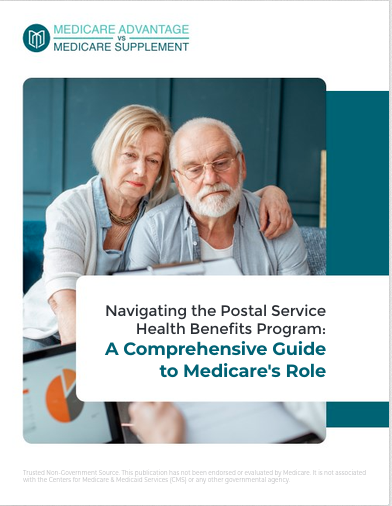Key Takeaways
-
Timing is Key: Knowing when to enroll in Medicare can help you avoid penalties and ensure your coverage is in place when you need it.
-
Special Circumstances: If certain life changes affect your health coverage, you may qualify for a Special Enrollment Period to make adjustments outside the regular windows.
Navigating Medicare’s Enrollment Periods: Finding Your Perfect Fit
Medicare has a specific set of enrollment periods for every situation, but it’s easy to feel overwhelmed by all the different windows. The key to getting the most out of Medicare is understanding which period applies to your situation and what each one covers. Whether you’re new to Medicare or looking to make changes, understanding how these enrollment windows work can make all the difference. I’ll break down the Annual Enrollment Period, Special Enrollment Periods, and a few others so that you can confidently navigate Medicare’s options.
What Exactly Is Medicare’s Annual Enrollment Period?
The Annual Enrollment Period, or AEP, is a set time each year when current Medicare beneficiaries can make adjustments to their Medicare coverage. AEP runs from October 15 to December 7 each year, and any changes made during this period take effect on January 1 of the following year.
During AEP, you can:
- Switch from Original Medicare to a Medicare Advantage plan.
- Move from one Medicare Advantage plan to another.
- Add, change, or drop a Part D prescription drug plan.
This period is especially useful if your health needs have shifted, or if you’ve decided a different type of coverage might suit you better. Just remember that any adjustments made are only effective for the coming year.
Initial Enrollment Period: Your Medicare Starting Point
Your Initial Enrollment Period (IEP) is the first time you’ll be able to enroll in Medicare, lasting seven months around your 65th birthday. This period starts three months before the month you turn 65, includes your birthday month, and ends three months after.
The IEP is essential because it lets you sign up for Medicare Part A and Part B without any penalties, as long as you enroll on time. Missing this window could mean late enrollment penalties, which could last for as long as you have Medicare. During the IEP, you can also choose to sign up for a Medicare Advantage (Part C) or Part D prescription drug plan.
General Enrollment Period: A Second Chance to Sign Up
If you missed signing up for Medicare during your Initial Enrollment Period, you’ll get another chance through the General Enrollment Period (GEP). The GEP occurs every year from January 1 to March 31, with coverage beginning July 1 of the same year. However, signing up during this period may mean that you’ll face late penalties, particularly if you missed your IEP without a qualifying reason.
While the GEP provides an essential opportunity for those who missed their IEP, it’s a limited time frame, so you want to mark these dates on your calendar. Remember that penalties might increase your Medicare Part B premiums for life if you sign up late.
The Medicare Advantage Open Enrollment Period: Tweaking Your Plan
This period is unique to Medicare Advantage plan members. If you’re enrolled in a Medicare Advantage plan, you have an extra opportunity to make changes. From January 1 to March 31 each year, the Medicare Advantage Open Enrollment Period (MA OEP) allows you to switch to a different Medicare Advantage plan or return to Original Medicare. However, you can only make one change during this period, so it’s essential to be clear about what adjustments you want.
Special Enrollment Periods: Coverage for Life’s Unexpected Changes
Sometimes life throws curveballs, and you may need to make changes to your Medicare coverage outside of the standard enrollment periods. That’s where Special Enrollment Periods (SEPs) come in. SEPs are triggered by specific events that affect your coverage, such as:
- Moving to a new area that changes your plan’s availability
- Losing coverage from an employer or union
- Qualifying for Medicaid or Extra Help
Each SEP has unique timing and eligibility criteria, depending on your situation. For example, if you lose employer coverage, you have an 8-month window to sign up for Medicare Part B without penalties. It’s important to understand that different SEPs offer varying deadlines, so prompt action is essential.
Working Past 65? Special Enrollment Might Apply
If you’re still working when you turn 65 and have employer-sponsored health insurance, you may be able to delay enrolling in Medicare without penalties. You’ll qualify for a Special Enrollment Period when your employment or employer-based coverage ends, giving you eight months to sign up for Medicare Part B. This SEP is a valuable option, as it lets you avoid penalties that could otherwise apply if you didn’t enroll at 65.
Taking Advantage of Special Enrollment for Prescription Coverage
For those who might need drug coverage, certain SEPs allow you to add or change Medicare Part D (prescription drug coverage). For instance, if you qualify for Extra Help, a program that helps people with limited income pay for their Part D costs, you may have the flexibility to change your drug plan multiple times per year. This flexibility can be a major benefit if your medication needs change.
Understanding Medicare’s Enrollment Penalties
If you don’t sign up for Medicare during the appropriate enrollment periods, you could face penalties. Here’s a quick look at how they work:
- Part B Late Enrollment Penalty: If you miss your IEP and don’t qualify for a SEP, you could pay an extra 10% on your Part B premiums for every 12-month period you were eligible but didn’t enroll. This penalty is permanent.
- Part D Late Enrollment Penalty: If you go without creditable prescription drug coverage for 63 days or more after your IEP ends, you could face a late enrollment penalty, which is calculated as 1% of the national base beneficiary premium for each month you were without coverage.
Avoiding these penalties is all about knowing your enrollment windows and acting promptly when they open.
Enrolling in Medicare Online: A Quick Guide
The easiest way to enroll in Medicare is online at the Social Security Administration’s website. You’ll fill out your personal information, make your coverage choices, and submit your application digitally. This process is particularly convenient if you’re signing up for the first time during your Initial Enrollment Period.
If you’re unsure of which enrollment period applies to you or you need help choosing the right coverage, it can be helpful to review the Medicare & You handbook or seek assistance from a Medicare counselor.
Get a Clear Plan in Place for Each Enrollment Period
Medicare has multiple enrollment periods, and it’s worth having a strategy in mind for each one. Consider keeping a record of your health care needs each year so that when AEP rolls around, you can make confident decisions. If you anticipate any life changes that might qualify you for a SEP, such as a move or a shift in employment status, mark those events on your calendar too.
By reviewing your needs annually, you’ll be better prepared to act during AEP, GEP, or a Special Enrollment Period if one becomes available. Also, familiarizing yourself with Medicare’s timelines and penalties can save you money and ensure your health care needs are consistently covered.
Ready to Find Your Medicare Fit?
With so many options and specific windows for enrollment, getting the coverage you need starts with understanding when to enroll and which period best applies to your needs. These timelines are here to help guide you, whether you’re turning 65, switching plans, or navigating a major life change. By following these enrollment periods, you’ll be in a stronger position to find the right Medicare coverage that fits your lifestyle without worry.










